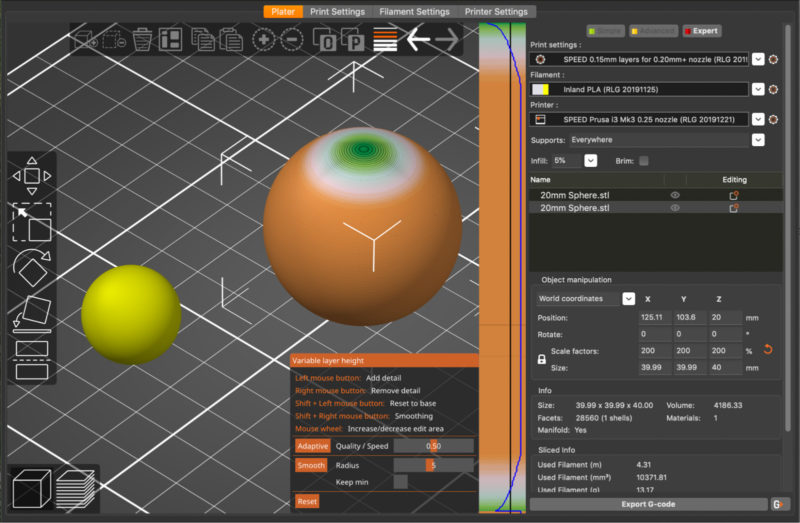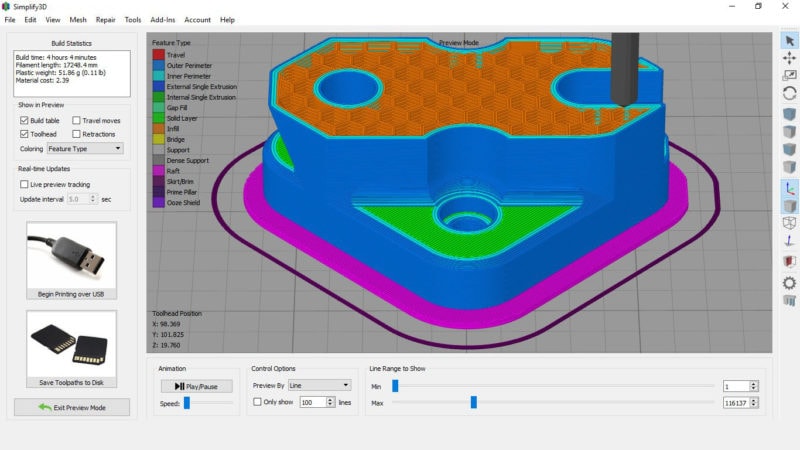

At this time the license is listed at US$149, one of the priciest slicing software products one can buy, short of high-end commercial software for industrial use. The software is not open source, and requires a paid license. Over time many manufacturers have published profiles for their equipment for use with Simplif圓D. It was so advanced at the time that several 3D printer manufacturers struck deals to bundle the software with their equipment, thus bypassing the need to develop slicing software on their own. However, there is an alpha release from July 2020 that could be still in the works. Unfortunately the last release of KISSlicer appears to be from July 2018, over three years ago. While there’s a basic version available for free, the paid versions include more advanced functionality, including the ability to handle multiple extruders. KISSlicer is not an open source product and can be purchased.

However, that’s not really the case KISSlicer includes quite a number of advanced features, although they may not seem quite as advanced as they used to be given the incredible features included in some other systems. The “Keep It Simple” slicer is named that due to its goal as a simplified tool for preparing 3D print jobs. That’s 3.5 years ago, and it’s unclear if there will be additional releases.
#Top free 3d slicers how to
Slic3r - and I still haven’t figured out how to properly pronounce the name - is also well-suited for integration with OctoPrint, a popular set-top box tool for managing 3D printers.ĭeveloped by Alessandro Ranellucci and community members, the most current release of Slic3r is version 1.3.0, which was released in May of 2018. Original developed by the RepRap community, the software is easily configurable for almost any FFF device and is entirely open source. Slic3r is one of the oldest options that’s still viable. Let’s take a look at the major slicing software options. The best a company could hope to do would be to customize a version of one of the open source options, but even then they’d quickly fall behind, as most of these projects are on the move, developing new releases continuously. Well, that might have been a strategy years ago, but it really isn’t an option anymore given the incredibly powerful options already freely available. There are also alternatives made by 3D printer manufacturers hoping to gain an edge over their competition by building their own amazing software. Some are new projects that might eventually gain larger followings. There are plenty of 3D print slicing software options, but I’m going to focus on the most mainstream options here, tools that can be easily used on many different machine types and are widely used.

Those days are long gone, and today’s software is exceptionally powerful, including many advanced functions to optimize 3D printer performance, material usage and print results.


 0 kommentar(er)
0 kommentar(er)
